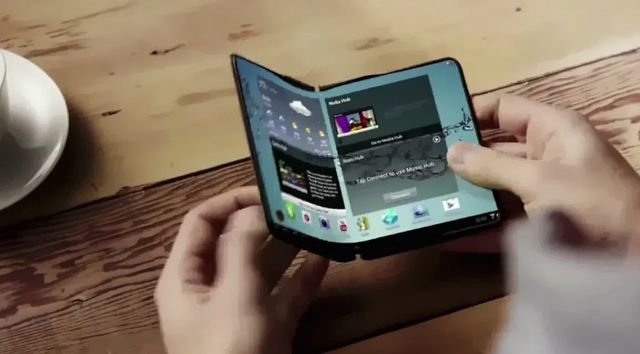
by Editor | May 25, 2021 | Branding, Business, Large Enterprise, Markets, Sales, Technology
 Seoul : South Korean tech giant Samsung Electronics has inked a deal to manufacture seven-nanometre (nm) microprocessors for US-based technology company IBM’s central processing units (CPUs).
Seoul : South Korean tech giant Samsung Electronics has inked a deal to manufacture seven-nanometre (nm) microprocessors for US-based technology company IBM’s central processing units (CPUs).
Samsung will manufacture seven-nm microprocessors for IBM Power Systems, IBM Z and IBM LinuxONE high-performance computing (HPC) systems and Cloud offerings, Yonhap news agency reported on Friday.
The deal is expected to help Samsung, which has Qualcomm Inc. as one of its clients, to beef up its foundry business utilising extreme ultraviolet (EUV) process technology, industry watchers said.
A foundry business refers to making chip designs for other companies that do not have a semiconductor fabrication plant.
“The agreement combines Samsung’s industry-leading semiconductor manufacturing with IBM’s high-performance CPU designs,” IBM said in a statement.
“It positions IBM and Samsung as strategic partners leading the new era of high-performance computing specifically designed for artificial intelligence.”
The two companies will also be extending their strategic research alliance, which has lasted for 15 years, IBM said.
Samsung claims that utilising EUV process technology paves the way to produce more precise chips compared with the conventional argon fluoride (ArF) immersion technologies, which can better meet demand from emerging big-data and AI industries.
The South Korean tech giant started the construction of its new production line equipped with EUV facilities in Hwaseong, south of Seoul, in February this year, which will commence operations in 2020.
—IANS

by Editor | May 25, 2021 | Branding, Business, Markets, Sales, SMEs, Technology
 By Nishant Arora,
By Nishant Arora,
New Delhi : DJ Koh, President and CEO of IT and Mobile Communications Division, Samsung Electronics, decided to change his strategy for the Indian market this year.
After seeing Chinese players getting the upper hand on innovations in the camera department, Koh geared up to alter course.
First came the Samsung Galaxy A7 with a three-rear camera system and now, Galaxy A9 with a monster four-rear camera system – the world’s first — has created ripples in the Indian market.
Galaxy A9 with dual tone, reflective gradient design, vibrant colours, scratch-resistant durable glass back and flagship infinity display has upped the ante in the fast-growing camera smartphone segment.
The 6GB/128GB and 8GB/128GB variants of Galaxy A9 cost Rs 36,990 and Rs 39,990, respectively.
Let us see why this device is a game changer when it comes to the future of mobile camera hardware – especially in the super-hot Rs 30,000-Rs 40,000 segment where OnePlus is a current leader.
Since camera is the focus, Galaxy A9’s vertically-stacked rear camera system comes with a telephoto lens capable of 2x optical zoom that allows to take crisp, detailed shots — even from a distance.
Try it for macro-photography, wildlife photography and situations where you need to get up-close to the action.
With Galaxy A9’s 24MP main lens, you can capture clear and bright images in both bright and low-light conditions.
In low-light conditions, the A9 allowed more light and we could see good results (on certain days, in a clear weather sans smog).
The Depth Lens gives the freedom to manually manage the photos’ depth of field and focus on the subject for stunning, professional looking images.
Galaxy A9’s “Ultra-Wide Angle” camera allowed us to capture not only the subject but the whole scene.
The company says that at present, most smartphones capture 77 degrees in their field of view.
On the other hand, Galaxy A9 is able to capture 120 degrees — helping capture more expansive photos, just like what our eyes see.
This comes in handy when you need to capture landscapes, group shoots or situations where you need to fit a lot into a single frame.
The front camera houses a 24MP sensor for selfie lovers.
The device comes with a larger and wider 6.3 Super AMOLED infinity display for immersive viewing experience which is further enhanced by Dolby Atmos surround sound, making it a delightful entertainment device.
The smartphone is powered by Octa-Core Snapdragon 660 processor and a large 3800mAh battery with fast charging capability that gave it high-speed performance for almost a day.
Galaxy A9 automatically recognises 19 kinds of scenes and optimises colour settings to suit the content – whether it is a nightscape, a field of flowers, or a plate of food.
The device can also intelligently detect when there is a flaw in an image and immediately notifies the user.
Galaxy A9 features virtual assistant Bixby, Samsung Pay and Samsung Health.
For multi-tasking, App Pair allows users to launch two apps at once on a split screen.
The device with 3D Glass-curved back runs Android 8.0 (Oreo) and is available in three colours — Caviar Black, Lemonade Blue and Bubblegum Pink (the last one was reviewed).
It also has a rear-mounted fingerprint sensor and face recognition support.
What doesn’t work?
The only big department where it lags behind the high-selling OnePlus 6T is the processor.
Although Snapdragon 660 is famous to power mid-range devices but at its price point, OnePlus houses Snapdragon 845 processor which is better for high-density usage like 4K video streaming and gaming for a longer duration.
Conclusion: The best camera device in the Rs 30,000-Rs 40,000 price segment that comes with the trust Samsung has earned in the Indian market. Putting your money on the world’s first four-camera smartphone in Galaxy A9 won’t disappoint you.
(Nishant Arora can be contacted at nishant.a@ians.in)
—IANS

by Editor | May 25, 2021 | Corporate Jobs, Employment, Private Jobs
 Gurugram : Samsung India is planning to hire over 300 engineers from the Indian Institutes of Technology (IIT) this placement season to strengthen its Research and Development (R&D) operations in the country, a company spokesperson said on Tuesday.
Gurugram : Samsung India is planning to hire over 300 engineers from the Indian Institutes of Technology (IIT) this placement season to strengthen its Research and Development (R&D) operations in the country, a company spokesperson said on Tuesday.
Company officials from three R&D centres located in Bengaluru, Delhi and Noida, will visit the IITs at Delhi, Kanpur, Mumbai, Chennai, Kharagpur, Guwahati, Varanasi and Roorkie starting December 1.
The R&D centres will also hire engineers from the newer IITs at Hyderabad, Dhanbad, Ropar, Indore, Gandhinagar, Patna, Bhubaneswar, Mandi and Jodhpur.
“Our R&D centres are focusing on cutting edge technologies, developing innovations for the Indian market as well as for the globe. We will continue to add engineers for research and development in these areas and further our commitment to making a strong research base in India,” said Sameer Wadhawan, Head, Human Resources, Samsung India.
Samsung has offered over 200 Pre-Placement Offers (PPOs) to students at the IITs this year.
“There’s a tactical shift that we have made to spot talent early and offer PPOs. This year, we had a slightly longer internship period so that students can spend more time in the company, giving them opportunity to interact with the leaders and managers.
“This helps us select bright talents amongst them,” said Wadhawan.
Apart from the IITs, Samsung will also be hiring from other top engineering colleges such as BITS Pilani, IIITs, NITs, Delhi Technological University, Manipal Institute of Technology and IISc Bangalore.
Between the IITs and other engineering colleges, Samsung will hire close to 1,000 engineers. In all it has offered 350 PPOs this year.
—IANS

by Editor | May 25, 2021 | Branding, Business, Markets, SMEs, Technology
 Seoul : Samsung Electronics Co plans to launch its first foldable smartphone in March, along with a fifth-generation (5G) network-powered Galaxy S10, industry sources said on Monday.
Seoul : Samsung Electronics Co plans to launch its first foldable smartphone in March, along with a fifth-generation (5G) network-powered Galaxy S10, industry sources said on Monday.
According to the sources, the South Korean tech giant plans to unveil the flagship Galaxy S10 smartphone in February, followed by the presumed foldable Galaxy F and another edition of the Galaxy S10 that runs on the 5G network in March, Yonhap news agency reported.
The outlook came after Samsung Electronics President Koh Dong-jin, who heads the mobile business, said last week that the company will release a foldable smartphone within the first half of 2019.
Koh said the shipment volume of the foldable smartphone will be at least 1 million.
Industry watchers said Samsung is expected to showcase the upcoming foldable smartphone in the Mobile World Congress in February, ahead of the official launch in the following month.
The much-awaited foldable smartphone, however, is not expected to support the 5G network.
While the price of the foldable smartphone has not been decided, industry watchers said it may cost around 2 million won ($1,770). The steep price is expected to limit sales.
Samsung said the upcoming foldable smartphone will fold inward and will sport a 7.4-inch screen when unfolded and have a 4.6-inch display like a regular smartphone when folded.
—IANS

by Editor | May 25, 2021 | Branding, Business, Marketing Basics, Markets, SMEs, Technology
 By Rachel V. Thomas,
By Rachel V. Thomas,
Seoul : Samsung, a global leader in display technology, is confident of coming up with an industry-leading display technology in its next flagship smartphone, a top executive said here on Wednesday.
According to Harksang Kim, Senior Vice President and Head of Mobile Visual R&D at Samsung Electronics, the company’s next flagship smartphone will have industry-leading, screen-to-body ratio.
This is in line with recent media leaks that the tech giant’s anniversary edition Galaxy flagship will be almost bezelless.
“Samsung is focused on enhancing the size of the display and, importantly, the ratio of the active area on the handset,” said Kim, adding that “our screen-to-body-ratio will be top notch”.
On foldable displays, Kim pointed out that Samsung has been developing the technology since the last four years.
“We have been working on foldable display for the last four years. But we are not focusing so much on the foldability itself but on benefits it can offer beyond a bigger display. We want to offer something beyond tablets in terms of application and solutions,” Kim stated.
He noted that the focus is on security and stability of foldable hardware as simply making a foldable display is not an innovation but just another method for providing a larger screen.
The South Korean tech giant also wants to focus on consumers’ ease of use and convenience.
“By next month, you will hear some official announcements by Samsung Electronics not just on hardware development but also on software and platform preparations as well,” the executive informed.
While Samsung smartphones currently provide two solutions for personal identifications — fingerprint recognition and iris scanning — the company is also working on optical fingerprint recognition sensors.
However, since personal identification is directly linked to personal information and brings potential risks to the consumers, the tech giant is trying to be careful.
“Although we know that there may be delays, we are reviewing optical solutions in terms of in-display finger recognition tech and other solutions,” Kim said.
On cameras, in the future models, the rear cameras will be developed to see beyond what the human eyes can see.
“From the hardware perspective, few years down the road, we believe that rear cameras with their DSLR technology are not just going to capture the environment or nature but beyond what the human eye can see.
“Fundamentally, the rear facing camera technology will be all about communications. For example, when I’m not available, my Augmented Reality (AR) emoji will be communicating on my behalf,” Kim said.
(Rachel V. Thomas is on a visit to Samsung Headquarters at Seoul. She can be contacted at Rachel.t@ians.in)
—IANS

 Seoul : South Korean tech giant Samsung Electronics has inked a deal to manufacture seven-nanometre (nm) microprocessors for US-based technology company IBM’s central processing units (CPUs).
Seoul : South Korean tech giant Samsung Electronics has inked a deal to manufacture seven-nanometre (nm) microprocessors for US-based technology company IBM’s central processing units (CPUs).



